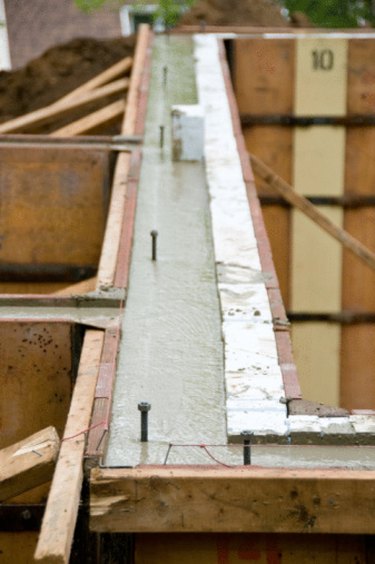
Local building codes regulate residential and commercial foundations. The standard method of pouring a foundation involves pouring footers first, and then pouring stem walls or foundation walls before pouring the floor. However, you may alter this construction standard by pouring a floor and footer at the same time in certain situations. Known as slab-on-grade, or a monolithic pour, this foundation method is quicker and less expensive than a multisegment pour. Soil type is essential to single-pour success.
Monolithic Pour
Video of the Day
Monolithic pour means "one pour." The foundation contractor excavates and forms the footers and the floor in one unit, adding steel reinforcement in both areas. As with a standard multisegment pour, local building codes will determine the amount of steel reinforcement, the depth and width of the footers and the thickness of the concrete floor.
Video of the Day
Advantages
A single pour doesn't result in a "cold joint" between the footer and the floor. With adequate internal steel reinforcement, this eliminates the weak point at the top of the footer that is present with traditional foundations. Speed and cost are the main advantages of pouring the floor and footer at the same time. You will have only one form to pour and one concrete crew to hire. Once the forms are off, you're ready to start framing your structure.
Disadvantages
In areas where the soil freezes, monolithic pours are not advisable unless used strictly for small shed-type foundations. The slab-on-grade method results in a thinner floor section in the middle, which is more likely to crack than around the outer edges. You must install control joints, which are predetermined cut lines, at points of high stress to control cracking.
Considerations
Soil type is a determining factor in the feasibility of constructing a monolithic pour. Bedrock and sandy soils that do not shift are suitable for monolithic pours. Clay, which has a tendency to swell and contract with moisture content, may cause a single pour to heave, shift or crack. In that situation, a standard pour that requires footers below the frost line may be more secure. Pouring a concrete foundation of any type is a major undertaking. If you're pouring in a community with building codes, an inspector must examine your forms and reinforcement materials before giving you the green light to pour.